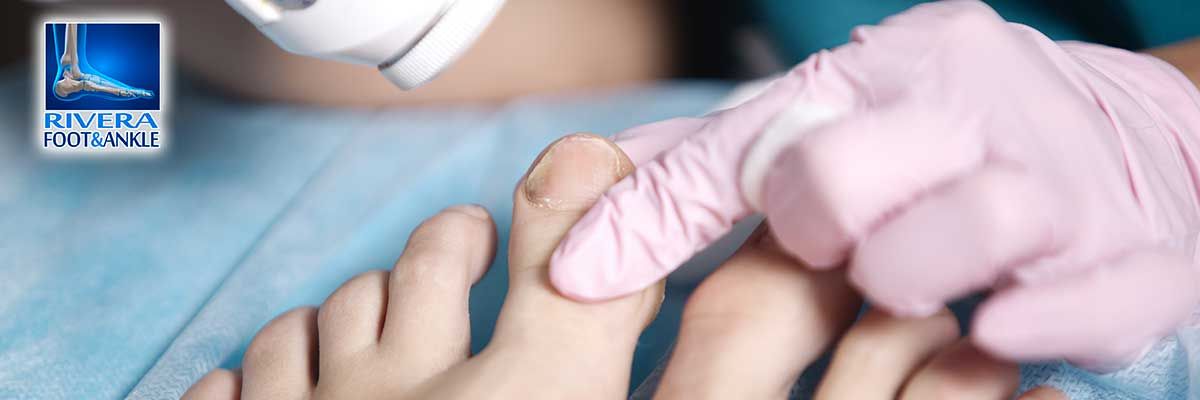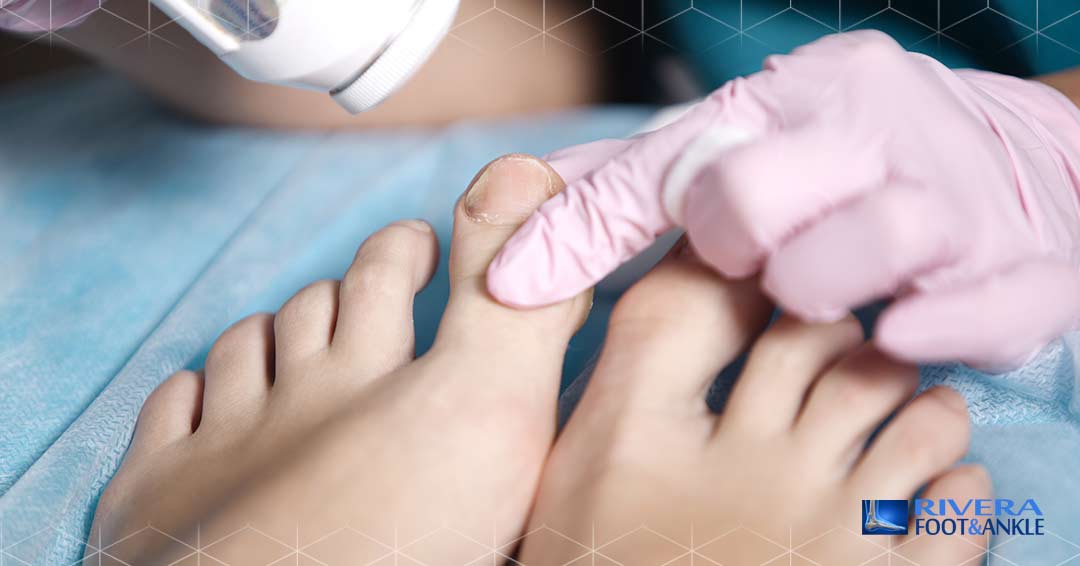
Treatment of Foot and Ankle
Types of Fungal Infections
Fungal infections are common throughout much of the natural world. In humans, fungal infections occur when an invading fungus takes over an area of the body and is too much for the immune system to handle.
Fungi can live in the air, soil, water, and plants. There are also some fungi that live naturally in the human body.
Like many microbes, there are helpful fungi and harmful fungi. When harmful fungi invade the body, they can be difficult to kill, as they can survive in the environment and re-infect the person trying to get better.
There are many different types of fungal infections. Common types include the following:
Athlete's foot
Tinea pedis or athlete's foot is a common fungal infection that affects the foot.
Athlete's foot is commonly associated with sports and athletes because the fungus grows perfectly in warm, moist environments, such as socks and shoes, sports equipment, and locker rooms.
In reality, anyone may be affected by athlete's foot. It is most common in warmer climates and summer months, where it can quickly multiply.
Symptoms
The symptoms of athlete's foot may vary slightly from person to person. Classic symptoms include:
- redness or blisters on the affected area
- the infected skin may be soft, or layers may start to break down
- peeling or cracking skin
- the skin may scale and peel away
- itching, stinging, or burning sensations in the infected area
Yeast infection
Vaginal yeast infections are a common form of Candida overgrowth in women, usually caused by Candida albicans.
An overgrowth of Candida disrupts the normal balance of the bacteria and yeast in the vagina. This imbalance of bacteria may be due to antibiotics, stress, and hormone imbalances, or poor eating habits, among other things.
Candida infections can also commonly cause fungal toenail infections and diaper rash.
Jock itch
Tinea cruris, commonly known as jock itch, is another common fungal skin infection.
These fungi love warm and damp environments, and thrive in moist areas of the body, such as the groin, buttocks, and inner thighs. Jock itch may be more common in summer or in warm, humid areas of the world.
Jock itch is mildly contagious and is often spread through direct contact with an infected person or an object that is carrying the fungus.
Symptoms
Jock itch appears on the body as an itchy, red rash that often has a circular shape to it. Symptoms include:
- redness in the groin, buttocks, or thighs
- chafing, irritation, itching, or burning in the infected area
- a red rash with a circular shape and raised edges
- cracking, flaking, or dry peeling of the skin in the infected area
Ringworm
Tinea corporis or ringworm is a skin infection caused by a fungus that lives on dead tissues, such as the skin, hair, and nails. Ringworm is the fungus that causes both jock itch and athlete's foot. When it appears anywhere else on the body, the infection is just called ringworm.
Symptoms
Ringworm is usually easy to notice because of its shape. A red patch that may itch or be scaly will often turn into a raised, ring-shaped patch of skin over time. It may even spread out into several rings.
The outside of this ring is red and may appear raised or bumpy, while the inside of the ring will remain clear or become scaly.
Ringworm is highly contagious, and it can be transmitted by skin-to-skin contact, or from contact with pets, such as dogs. The fungus may also survive on objects, such as towels, clothes, and brushes.
The ringworm fungus also infects soil and mud, so people who play or work in infected dirt may catch ringworm as well.
Onychomycosis
The term fungal nails, medically known as onychomycosis, refers to a fungal infection of the toenails or fingernails.
Symptoms
Fungal infection of the nails may cause changes in the nail itself and its appearance, including symptoms and signs such as discoloration, flaking and thickening.
Fungal nails may appear brittle, broken, and lifted or separated from the nail bed. Changes in the nail appearance are typically the first signs and symptoms of fungal nails.
The condition may also cause pain and disfigurement in some cases, although this is not common. In severe cases, fungal nails can cause problems with standing, walking, and exercising. Both oral and topical antifungal drugs may be used in treatment.

Source: MedicalNewsToday
RIVERA FOOT & ANKLE: At Orlando H.Rivera DPM, our priority is to deliver quality care to informed patients in a comfortable and convenient setting. When you have problems with your feet, you need to turn to a podiatrist who listens and responds… an experienced doctor who knows the field and can effectively diagnose and treat your needs… a friendly physician who counsels you on the best ways to maintain and improve your health. Our physician(s) meet all these criteria. Plus, you benefit from a dedicated team of trained professionals who give you the individualized attention you deserve.
Treatment of Foot and Ankle
Foot and Ankle, Dr. Orlando Rivera, Advanced Foot & Ankle Specialist, Foot and Ankle Podiatry, Houston Foot & Ankle Surgical, Treatment of Foot and Ankle, Foot & ankle specialists, Podiatrist in houston, podiatrist in houston, Orlando H.Rivera DPM, Houston Foot Doctor, Foot and Ankle Surgeon Houston, Ankle and Foot Specialist Houston, Podiatrist Houston, Foot Pain Houston.



